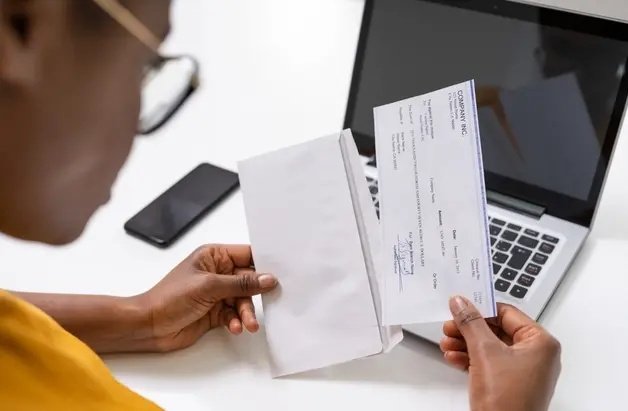How Long Does It Take to Get a CDL: Commercial driving is a career path filled with independence, travel, and competitive pay. If you’re considering this field, you’ve probably asked the key question: how long does it take to get a CDL? The journey from beginner to licensed commercial driver isn’t instant, but with a clear roadmap, it can be faster than you think. This article explores every step of the CDL process—from prerequisites to training and final licensing—so you know exactly what to expect.
Table of Contents
Understanding What a CDL Is
A CDL (Commercial Driver’s License) is a requirement for operating large or heavy vehicles for commercial purposes. There are three classes:
- Class A: for operating combination vehicles like tractor-trailers
- Class B: for straight trucks, buses, and delivery trucks
- Class C: for smaller vehicles carrying hazardous materials or passengers
Each class has specific requirements, but the question how long does it take to get a CDL depends heavily on the class you choose and the training route you take.
How Long Does It Take to Get a CDL: Step-by-Step Breakdown
To accurately answer how long does it take to get a CDL, let’s break it into key stages:
Step 1: Meet Basic Eligibility (Time: 1 day to 1 week)
Before enrolling in training, you must:
- Be at least 18 years old (21 for interstate driving)
- Have a valid non-commercial driver’s license
- Possess a clean driving record
- Pass a Department of Transportation (DOT) medical exam
Gathering the necessary documents and passing the DOT physical may take up to a week.
Step 2: Obtain a Commercial Learner’s Permit (CLP) (Time: 1–2 weeks)
To begin CDL training, you need a CLP. This involves:
- Passing a written knowledge exam
- Providing identification and residency documentation
- Paying applicable fees
How long does it take to get a CDL permit? Typically, after studying your state’s CDL manual for a week and passing the exam, you’ll receive your CLP within a few days.
Step 3: Complete CDL Training (Time: 3–8 weeks)
This is the most time-intensive part of the process. Accredited CDL training programs offer:
- Classroom instruction on driving regulations and vehicle maintenance
- Behind-the-wheel training to develop real-world driving skills
Full-time programs often last 3 to 5 weeks, while part-time or weekend classes may extend to 7 or 8 weeks. So, when wondering how long does it take to get a CDL, remember this is the core commitment of your timeline.
Step 4: Practice With CLP (Time: Minimum 14 days)
Federal law requires you to hold your Commercial Learner’s Permit for at least 14 days before taking the skills test. During this time, you’ll practice driving under supervision, often within the same CDL training program.
This required waiting period can’t be skipped and is crucial when calculating how long does it take to get a CDL from start to finish.
Step 5: Schedule and Pass the CDL Skills Test (Time: 1–2 weeks)
Once your training is complete and the 14-day minimum has passed, you’ll schedule your CDL test, which includes:
- A pre-trip inspection
- Basic vehicle control skills
- On-road driving evaluation
Availability of test slots can vary by state, but many drivers complete this within 1 to 2 weeks. Assuming you pass on the first attempt, your license will be issued shortly after.
How Long Does It Take to Get a CDL with Endorsements?
If you plan to drive specialized vehicles—like tankers, school buses, or hazmat trucks—you’ll need to earn endorsements. Each endorsement requires:
- Additional written exams
- Fingerprinting and a TSA background check (for hazmat)
Adding these endorsements can increase the total time by 1 to 3 weeks, depending on scheduling and background check processing. This is an essential detail when answering how long does it take to get a CDL with endorsements.
Fast-Track CDL Programs: Can You Get a CDL Faster?
Some schools offer accelerated programs that complete training in as little as 3 weeks. These programs are intensive and often run full-time, Monday through Friday. If your schedule allows, fast-track training is the best option to minimize how long it takes to get a CDL.
Still, even in the fastest route, due to the required 14-day holding period for your CLP and possible test scheduling delays, the absolute minimum time to get a CDL is around 4 weeks.
Total Time Estimate: How Long Does It Take to Get a CDL from Start to Finish?
Taking all factors into account, here’s a typical timeline:
| Step | Estimated Time |
|---|---|
| Eligibility and DOT Exam | 1 week |
| Get CLP | 1–2 weeks |
| CDL Training | 3–8 weeks |
| Practice with CLP | 2 weeks minimum |
| Skills Test & License | 1–2 weeks |
| Total Time | 7–13 weeks |
So the full answer to how long does it take to get a CDL is about 2 to 3 months, depending on training format, scheduling, and individual progress.
How Long Does It Take to Get a CDL If You Study Independently?
Some states allow individuals to self-study and take the CDL test without attending a formal school. While this may sound faster and cheaper, it often leads to delays due to:
- Lack of vehicle access for practicing and testing
- Higher test failure rates due to insufficient preparation
So if you’re serious about a commercial driving career, formal CDL training will likely get you licensed faster—even if it seems longer upfront.
Final Thoughts: Is It Worth the Time?
If you’ve been asking how long does it take to get a CDL, it’s likely you’re ready for a career shift. Considering the relatively short time commitment (2–3 months) compared to the potential for long-term earnings and job security, pursuing a CDL is a smart investment.
Whether you’re aiming to drive across states in a big rig or operate a school bus locally, the time it takes to get a CDL is well worth the reward.
Key Takeaways
- You can get a CDL in as little as 4–6 weeks with an intensive program, but 2–3 months is more typical.
- Federal law requires a 14-day minimum period with a Commercial Learner’s Permit before testing.
- Endorsements and specialized training can add time but offer better job opportunities.
- Fast-track programs are available but require full-time dedication.
- The best way to minimize delays is to enroll in a reputable CDL training program and stay proactive.





